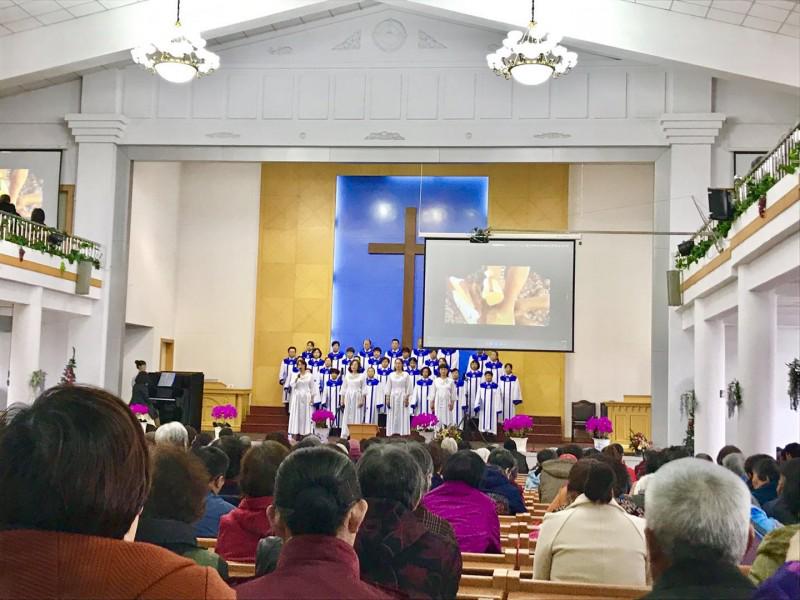In the late 1850s and early 1860s, western Protestant missionaries "gathered" in the eastern region of Penglai, China's eastern Shandong. According to incomplete records, from 1859 to about the time of the 1911 Revolution, as many as 150 foreign missionaries successively came to Dengzhou. Those living and preaching in Penglai for at least a year or so and had a name that could be traced were more than 110. There they ran schools, practiced medical care, preached, and aided in disaster relief. Some of them dedicated themselves for decades to their callings as if one day to be honored globablly for their performance. In the 19th century, even during a time of a large-scale overseas Christian missionary movement, the case of the small town of Penglai in Dunzhou was rather rare.
Until now, the introduction of Christianity into China on a large scale that has traceable historical records has occurred four times. The first time was during the peak of the Tang Zhenguan Years. At that time, the western Christian "heretical Nestorians" entered China and received great preferential treatment, so much that it enjoyed a rapid spread across the whole country. This has been called "Nestorianism" and lasted until the years of Tang Wuzong when the "Oppression of Buddhism " took place. The second time was during the Yuan Dynasty when the western expedition of the Mongol Yuan army opened the channels of east-west communication. And as the Christian heresy of Nestorianism and the "old" Christianity of Catholicism entered, Christianity became widely accepted among the Mongolian nobles. It was called "Tarsa". However after the demise of the Yuan Dynasty, Christianity disappeared with it. The third time was at the end of the Ming and the beginning of the Qing Dynasty. It was called "Catholicism" and had a greater impact in the big cities and among the elites. However later it was followed by a policy of prohibition that continued into the last years of Emperor Kangxi due to a "dispute over etiquette". Consequently, the Catholic Church declined again almost to the point of extinction. The fourth time was a more complex situation because of the existance of both Catholicism, and the scale and momentum of the "new" Protestant Church, which had undergone various reforms. The fourth time that Christianity was introduced into China was different from the last three and has divided the academic community from the begin until the present.
The first three times of Christianity's introduction to China can be said to have occurred under the conditions of a strong, nationalistic China. It was achieved through peaceful ways of China absorbing and voluntarily accepting it. The fourth time it was done through the strong gunships of the Western powers. After the First Opium War, the Qing Government was forced to sign a series of unequal treaties with Western countries represented by the Treaty of Nanjing, which stipulated that Western missionaries could preach at five trading ports, thus abolishing the prohibition policy which had been in place since the end of Emperor Kangxi's reign. During the Second Opium War, the Qing Government was badly defeated again and successively signed the Treaty of Tianjin and the Treaty of Beijing with western countries. These treaties stipulated that the previously confiscated Catholic property be returned, and that missionaries from various countries be allowed to travel and preach in the interior of China and not just in the trading ports. The French added the provision in the Chinese version of the Sino-French Treaty of Beijing (there is no provision in the French text), "French missionaries are free without need for authorization to rent and buy fields in the provinces and build properties for themselves". And so there was a disagreement among the academics over whether foreign missionaries had the right to buy and sell and build houses in the Mainland during the late Qing Dynasty, since foreign missionaries had been allowed to preach in the Mainland. The ability to buy, sell and rent houses was a matter that the parties could in fact deal with. Plus, the French were able to add provisions in the Chinese version that were not available in the French version, which in itself illustrates the lack of power by the Qing Government and the officials in charge of negotiations.
However, it is also important to face up to the fact that, as is well known, in the modern history of mankind since the beginning of the 19th century, the Christian evangelical revival movement, also known as the Second Awakening Movement, spawned a large number of Protestant missionaries from Europe and the United States to be sent out all over the world. This movement transformed Christianity from being largely confined to Europe and the United States to become a global religion. The spectacular wave of overseas evangelism in the 19th century was the result of the Second Great Awakening Movement and became a powerful driving force for the transformation of Christianity into a global religion. As early as 1831 and 1832, before the two Opium Wars, western Protestant missionaries came to the eastern coast of Jiaodong and landed in the state of Jiaozhou and Weihai to distribute pamphlets promoting Christianity. It was only because "local officials did not allow" them to go to the mainland nor to "trade with the local people" that these missionaries "went to Korea".
Basically speaking, the large-scale overseas movement of Christianity in the 19th century was closely related to the global expansion of Western capitalism, and the development of capitalist political economies provided the basis and conditions for the global expansion of western powers and the Christianity overseas movement.
The overseas movement of Protestantism in the 19th century was however not directly related to the political and economic interests of governments. Protestant missionaries who traveled all over the world were not by sent governments or business interests to serve them but rather went out of a religious conviction and willingly offered to preach the gospel of Christ among the people of non-Christian countries with the approval of their sending churches. They served God from their hearts and were martyred for their faith. In this sense, the fourth time that Christianity was introduced into China during the Daoguang years of the late Qing Dynasty was a cultural phenomenon caused by a principle of "a difference in power" in the history of the development of human civilization.
Against this background of Chinese and foreign history as mentioned above, the defeat of the Qing Government during the second Opium War resulted in Dengzhou initially being forced to open up as a foreign trading port (it had its named changed to Yantai soon after the end of the War) which opened the door for the influx of Western missionaries.
(The article was originally published in the Sina blog of Donghaisanxian.)
- Translated by Charlie Li











